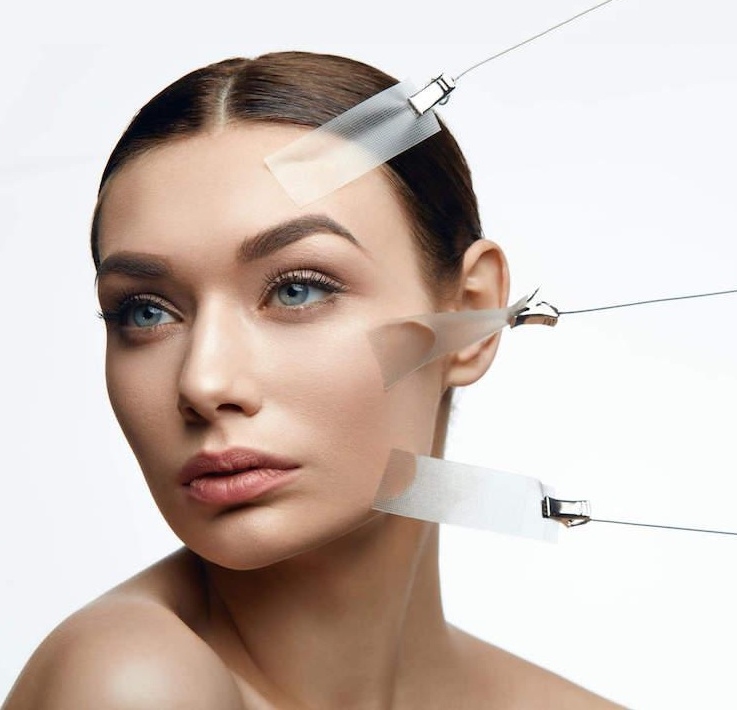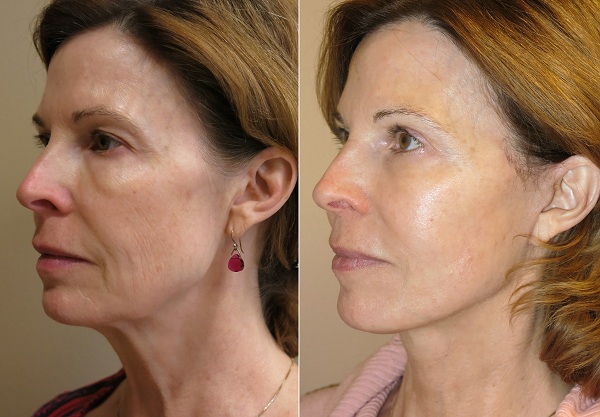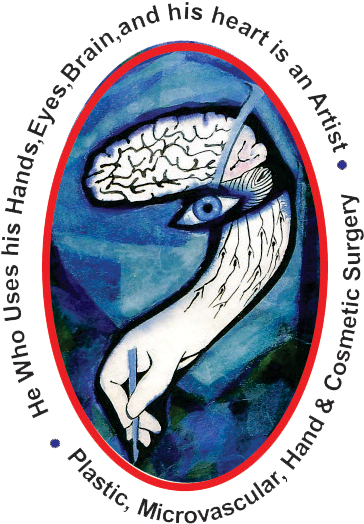Face Lift
A face-lift (rhytidectomy) is a cosmetic surgical procedure to create a younger appearance in your face. The procedure can reduce the sagging or folds of skin on the cheeks and jawline and other changes in the shape of your face that occur with age.

During a face-lift, a flap of skin on each side of the face is pulled back, and tissues below the skin are surgically altered to return the contour of the face to a more youthful shape. Before the flap is sutured closed, excess skin is removed.
A neck lift (platysmaplasty) is often done as part of a face-lift to reduce fat deposits and sagging skin on the neck.
A face-lift won’t decrease fine creases or wrinkles in your skin or damage from sun exposure. Other cosmetic procedures can address the appearance or quality of the skin itself.
Why it’s done
As you get older, the appearance and shape of your face is altered because of normal age-related changes. Your skin becomes less elastic and looser, and fat deposits decrease in some areas of your face and increase in others. Age-related changes in your face that may be reduced with a face-lift include the following:
- Sagging appearance of your cheeks
- Excess skin at your lower jawline (jowls)
- Deepening of the fold of skin from the side of your nose to the corner of your mouth
- Sagging skin and excess fat in the neck (if the procedure includes a neck lift)
A face-lift isn’t a treatment for superficial wrinkles, sun damage, creases around the nose and upper lip, or irregularities in skin color.
Questions? We got Answers!
As we age, skin begins to lose elasticity, and facial tissues lose volume. Eventually, this results in “jowls” on the lower face, deep wrinkles, and loose skin on the neck. While this is a natural part of growing older, patients who are bothered by these signs of aging may find a facelift to be a good solution. If any of the following describe you, a facelift is an option to consider:
- You feel self-conscious about the way your face & neck look due to sagging skin
- You wear turtlenecks and scarves not because you want to, but because you want to hide your aging neck
- When you see your reflection, you feel that your face makes you look much older than you feel
- You feel that an aging appearance is negatively affecting your career or personal relationships
Following a facelift, patients frequently experience an upsurge in self-confidence, as their appearance better portrays their healthy, energetic vibe.
Mini-Facelift
Patients who exhibit a mild degree of jowling and sagging skin are often good candidates for a mini-facelift. This is a less invasive technique that allows a cosmetic surgeon to tighten deep facial tissues through shorter incisions, typically located along the hairline above each ear and/or in the natural creases surrounding the ear. Through these incisions, structural tissues around the cheeks are lifted and tightened to correct jowling, refine the jawline, and rejuvenate a “tired” appearance. Depending on the case, a mini-facelift may be performed using local anesthesia with sedation or general anesthesia; your cosmetic surgeon will recommend the best option for your individual needs. A mini-facelift can help you address unwelcome signs of aging before they become too pronounced, postponing the need for more extensive surgery for many years.Standard Facelift
A standard or “traditional” facelift will more fully address moderate to advanced aging around the mid-face and neck. While the surgery is more extensive than those for a mini-facelift, and thus more recovery time is required, the results are more dramatic. Through incisions located just behind the hairline, starting near the temples, and around the front of the ear, hidden in the natural folds, a cosmetic surgeon can reposition the deeper tissues beneath the skin and remove excess skin to smooth creases, eliminate jowling and sagging skin under the chin, and restore a naturally youthful contour to the face and neck.The exact technique a cosmetic surgeon uses during a facelift depends on a number of factors, including a patient’s anatomy and personal goals, the extent of the facelift (mini vs. standard), and whether or not another procedure is being performed at the same time. Facelifts are typically performed using general anesthesia, although local anesthesia with sedation may be used in certain less extensive procedures.
After making the initial incisions, the skin is separated from the underlying connective tissue and muscles. This allows the cosmetic surgeon to reposition the deeper facial tissues, get rid of the jowls and create a firmer foundation for the skin. Then, excess skin is removed, and the remaining skin is gently laid back over the newly rejuvenated facial tissues, giving the face a smoother, more youthful contour without over-tightening the skin.
It’s not uncommon to hear the word “facelift” used when referring to any type of facial rejuvenation surgery, and understandably, a lot of people think that a facelift involves operating on the entire face—eyes, brow, cheeks and chin. That’s understandable; after all, your eyes and forehead are part of your face too. However, a facelift on its own only addresses the lower two thirds of the face – the cheeks and jawline.
Why is this the case? It is largely due to differences in anatomy. The skin, muscles and other tissues along the brow and surrounding the eyelids are very distinct, and cosmetic surgery to each of these areas requires an entirely different set of techniques than those used during a facelift.
It is common for patients to choose to have an eyelid lift, brow lift or neck contouring at the same time as a facelift, but in these cases, a cosmetic surgeon will actually be performing two different procedures in one single operation. Likewise, patients who only want to address aging around the eyes or neck can typically achieve their goals with only an eyelid lift or neck lift, and not a facelift.
When performed by an experienced, board certified cosmetic surgeon, a facelift is designed to achieve results that not only look natural now, but will also age naturally with you. While nothing can stop the normal aging process, after a facelift you should always look years younger than you would have without the surgery.
However, there are certain things you can do to keep your results looking their best. Maintaining a healthy, stable weight is important as significant weight fluctuations can cause skin to stretch out again. You should also adopt a consistent, quality skin care regimen to keep your skin healthy and protected from unnecessary aging.
When performed by a qualified cosmetic surgeon, facelift surgery is a safe procedure and an excellent way to rejuvenate your appearance. The best way to decide if a facelift is right for you is to consult with a board certified cosmetic surgeon.




